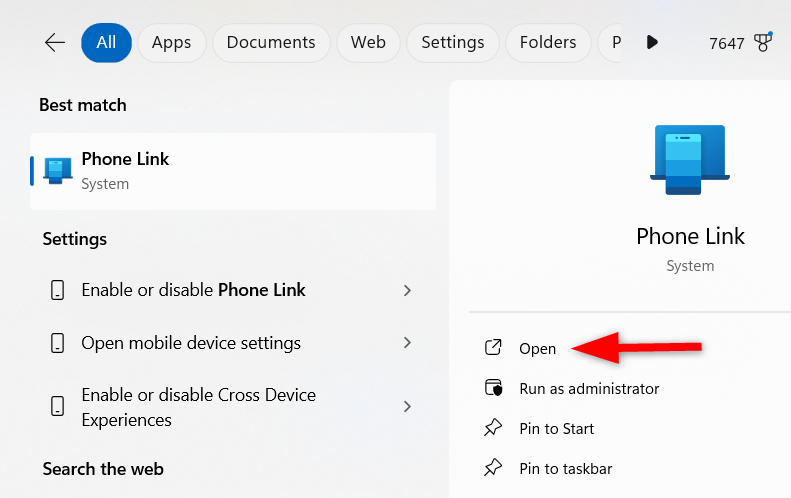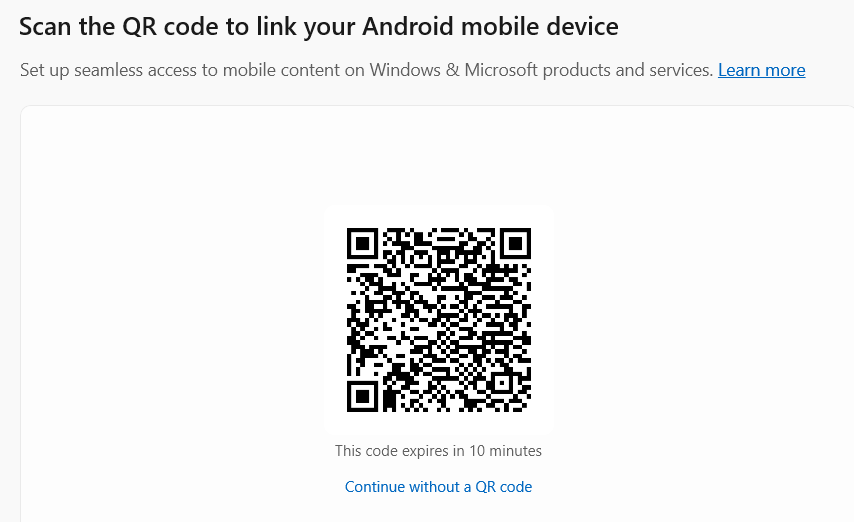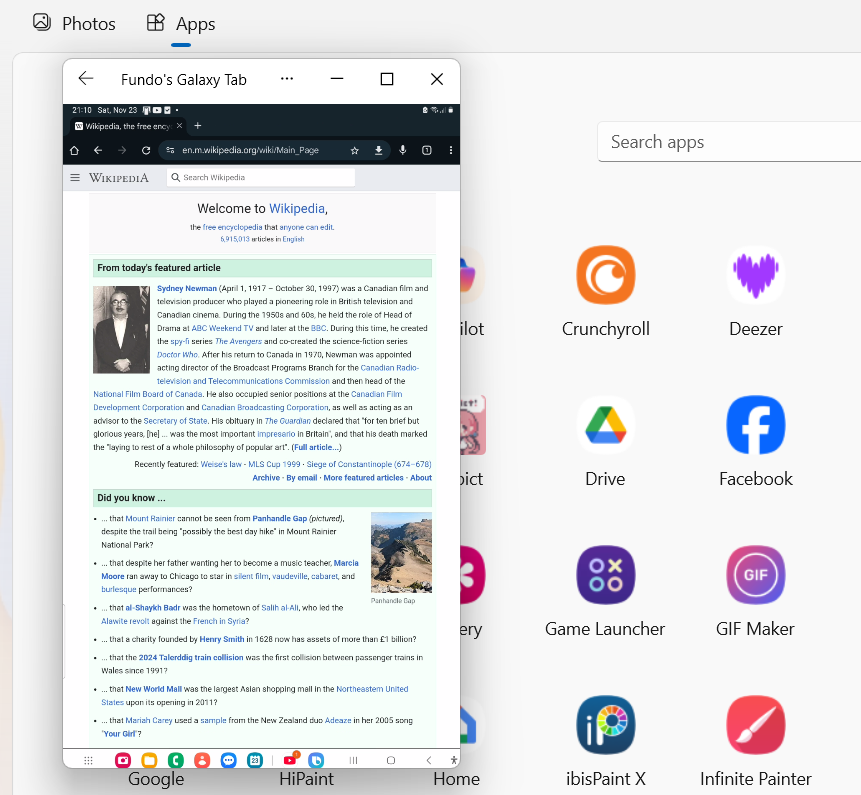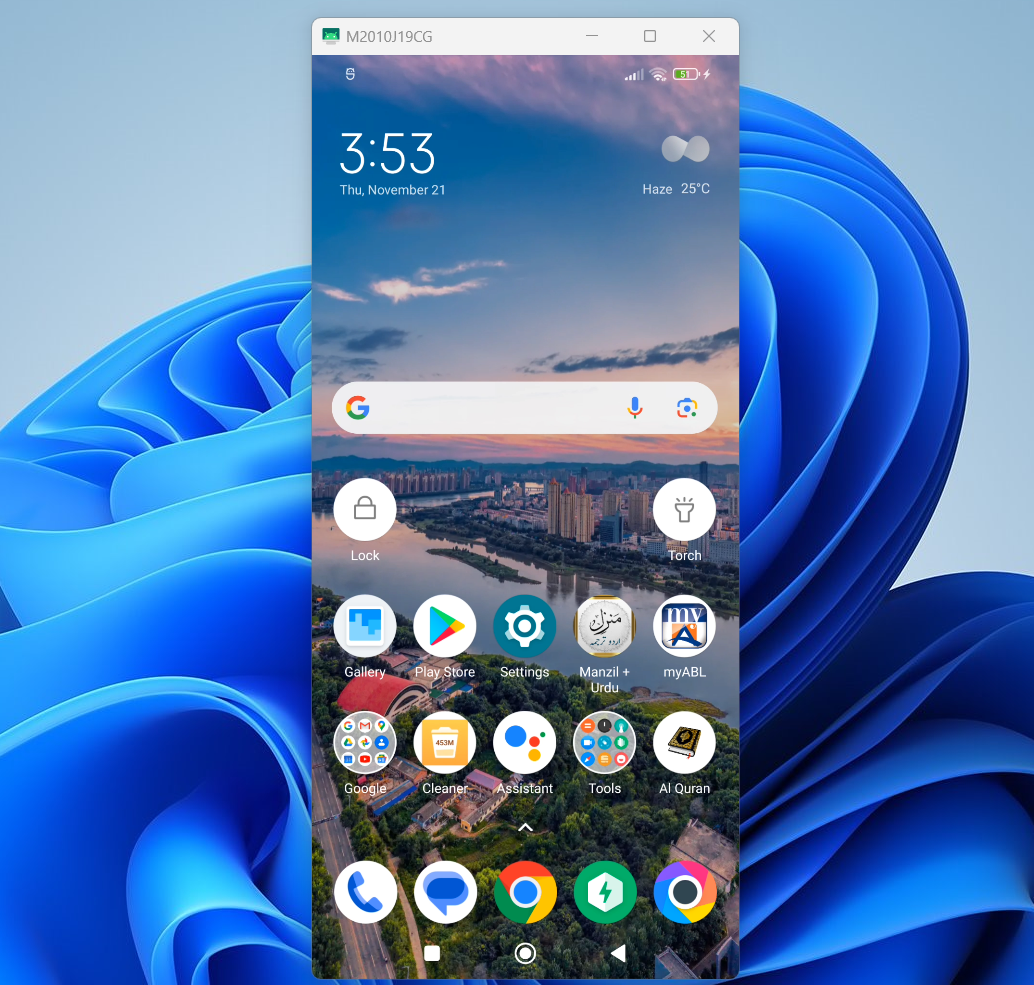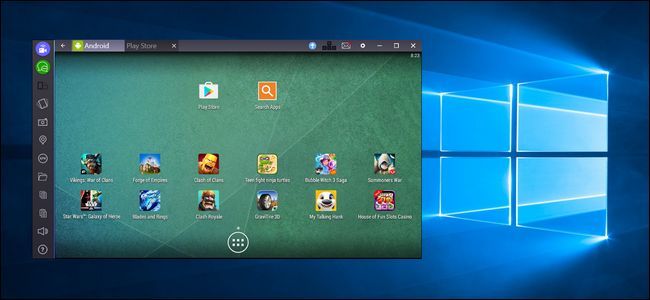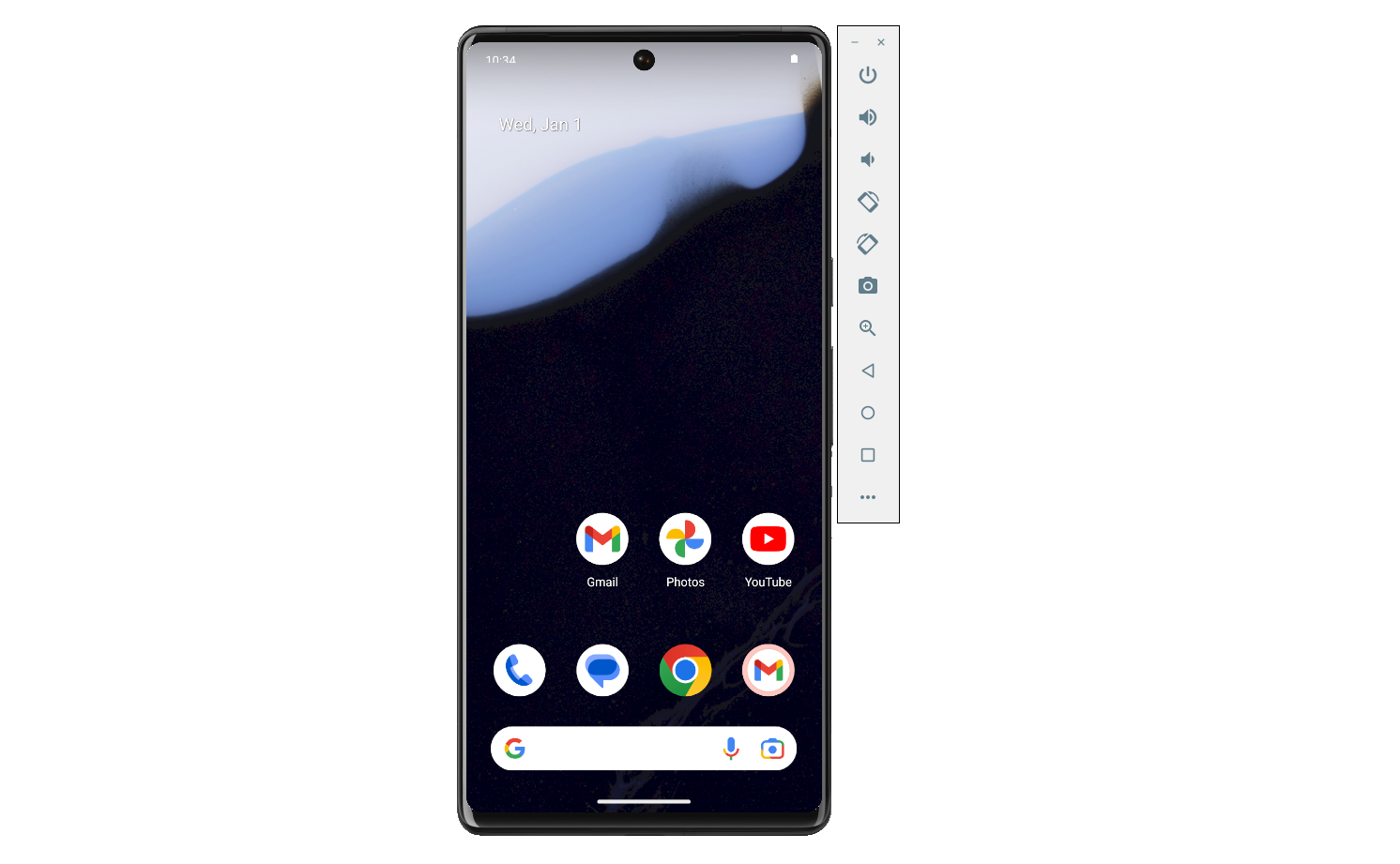Despite coming from competing companies, Android and Windows are two platforms that are quite compatible and capable of interaction. Here, I’ll show you several ways to connect and run Android apps on your Windows PC.
4
Connect With Phone Link
Phone Link (previously known as the Your Phone app) is the fastest and simplest way to connect your Android device to your Windows machine. With Phone Link, you can make calls, view notifications, access your photo gallery, and run your favorite Android apps directly on your PC.
However, some of these features are not available for all devices; it primarily supports specific models, mainly from Samsung and HONOR.
To use it, download and install the Phone Link app on your Windows PC and your Android device. It is usually preinstalled on Windows PCs, but if it’s missing, you can get it from the Microsoft Store. Similarly, on Samsung cell phones, the app is often preinstalled, but other Android users can manually download the Link to Windows application from the Google Play Store.
Next, launch the Phone Link on your Windows machine and follow the instructions to pair it with your Android device.
To finish pairing, you might need to type a code or scan a QR code.
Once paired, you can use your PC to view and respond to texts, access your phone’s photos, and make and receive calls. Some Samsung and HONOR devices also support screen mirroring through Phone Link, enabling you to control your phone directly from your PC.
Furthermore, you can connect multiple devices to your PC using Phone Link, provided they are linked to the same Microsoft account. However, only one device can be accessed at a time.
3
Cast Your Android Screen
If Phone Link’s screen mirroring isn’t supported on your device, or if you want a simpler alternative, casting your Android screen to your PC through third-party tools is a viable option. For example, tools like Scrcpy, AirDroid, or ApowerMirror allow you to mirror your phone’s display on your computer monitor. These tools are lightweight and user-friendly. Simply connect your phone to your PC via USB or Wi-Fi, and your Android screen will appear on your desktop.
I recommend Scrcpy, as it supports mirroring and controlling nearly any Android device with a USB connection. I’ve personally used it, and the experience is smooth and user-friendly. You can download Scrcpy from its repository on GitHub and visit the Windows download page.
2
Try Using an Android Emulator
An emulator is a software program that mimics the Android operating system on your PC, enabling you to run Android apps and access Android content directly from your computer.
However, emulators can be resource-intensive and may not deliver the same performance as running apps on a physical device. They create a virtual Android environment on your PC, allowing you to download apps from the Google Play Store, play mobile games, and use social media apps.
Additionally, you are also not able to access all of your phone’s content, such as photos, calls logs and messages through an Android emulator.
There are several Android emulators available for you to use, such as BlueStacks, the Android Studio Emulator (Google’s official emulator), NoxPlayer, and KOPlayer.
To begin, download and install your preferred emulator on your PC. Follow the setup prompts, and once configured, you can visit the Google Play Store to get Android apps directly onto your PC.
1
Run Android Apps Within a Virtual Machine
You can create a virtual machine using software like VirtualBox or VMware and install an Android operating system, such as Bliss OS. We’ve seen others have success with it, but have not fully tested it ourselves, so use it with caution. Another option is to use an Android studio emulator to create a virtual device.
Within a virtual machine, you’ll have access to the Android interface, allowing you to download mobile applications from the Google Play Store or sideload APK files.
Furthermore, running a full Android environment on a virtual machine provides better compatibility with apps compared to some emulators. However, because it is resource-intensive, it may result in slower performance compared to native emulator solutions.
The best solution depends on your needs. Sometimes, the simplest option—like Phone Link—is sufficient, while other times, setting up a virtual machine or using an emulator is worth the effort.


